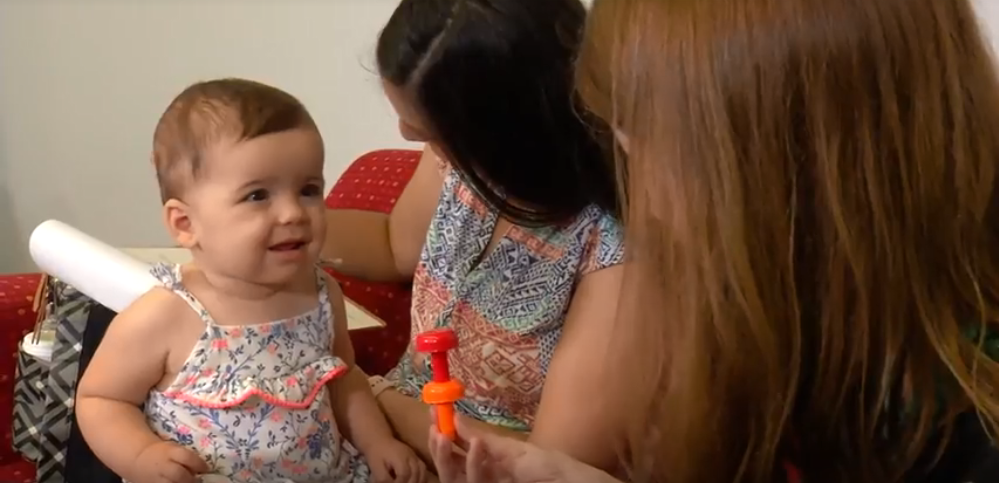CHICAGO, Ill. (Ivanhoe Newswire) — As adults, we have the ability to predict others’ behavior. For example, if we know that our friend is thirsty and she reaches for a glass, we can predict that she’s going to pour herself a drink. Social scientists are now discovering that, with practice, even babies are able to forecast human behavior, an important part of growing up.
One-year-old Camille Walker isn’t talking yet, but her mom, Laura, can often guess what she wants.
“Sometimes she’s predictable and sometimes she’s not,” Laura told Ivanhoe.
While mom is watching baby for clues, baby is doing the same. Developmental psychologists wanted to learn when babies begin to predict the behavior of others, and how. Researchers showed infants a video of a woman reaching for toys. When the babies watched a similar video that paused, eye-tracking equipment measured exactly where the baby’s eyes focused during the pause.
“What the eye tracker is doing in this instance is telling us if the baby can predict what the woman is going to reach to before her hand gets there,” explained developmental psychologist Sheila Krogh-Jespersen, PhD.
Researchers found that if they gave the babies practice reaching for the toys ahead of time, even those as young as eight months could make predictions.
Amanda Woodward, PhD, a developmental psychologist at the University of Chicago, detailed, “Just reaching themselves gave them some insight, some ability to think about other people’s intentions.”
This ability is important, because researchers say that understanding other people’s actions helps babies learn social cues. Parents can help babies learn to predict actions by letting them safely explore. Let them hold and manipulate household objects like a spoon or a sock.
“It’s fun to see what does capture his imagination,” said parent Kristin Cross about her son, Louis.
Researchers say that, while babies are able to reach out and grasp objects by eight months, just watching the action may not be enough for them to form predictions without practice and help from their parents.
Contributors to this news report include: Cyndy McGrath, Supervising and Field Producer; Milvionne Chery, News Producer; Roque Correa, Editor and Videographer.
Produced by Child Trends News Service in partnership with Ivanhoe Broadcast News and funded by a grant from the National Science Foundation.
Research cited from: https://www.ncbi.nlm.nih.gov/pubmed/29499431

